My favorite cult comix figure from Latin America. 

It so happens that I (Lyfo) have been studying the Spanish language since 1966. It started in High School were I was informed that to graduate there were certain Electives that had to be taken. They were called Electives because, in the case of languages, you had to choose whether you would study French, German, Spanish or Italian, as I recall. My response was, “which one is easiest to learn?” And most people considered Spanish to be the easiest language due to the consistency of the vowels and after all Esperanto seemed to be largely based on Spanish. And I was well advised.
But I must also admit, as one who wasn’t fond of school, I couldn’t even have told you which countries spoke the language or why. For some reason, I had a hunch they spoke it in Bolivia and of course Spain was a no-brainer. As you may know history, geography and economics are almost taboo in American schooling, and most people get extremely turned off to these fascinating subjects due to the (Secret Agenda) or rather to the way they are taught in the mandatory de-education camps, I mean schools.
But be that as it may be, going forward into the 21st Century we now have the opportunity to totally remake education, medicine, culture and absolutely every human endeavor through multiple decentralized platforms offering whatever-you-want, home schooling, learn-on-our-own, follow-your-interests on-demand learning, at the Free Market School of Ideas. And may the best of its class thrive, as the mediocre improve and the poor become adequate. Win-win-win and no one looses.
I’ve always liked comic books a lot. They are not always comic at all but they are, like most books, always educational in some way or other. Indeed this media contains more than one art form, mainly both story telling and graphic arts. Much like the ‘phone & games’ that kids get obsessed with nowadays, comics were the disreputable, but much loved, art form of half a century ago and much longer.
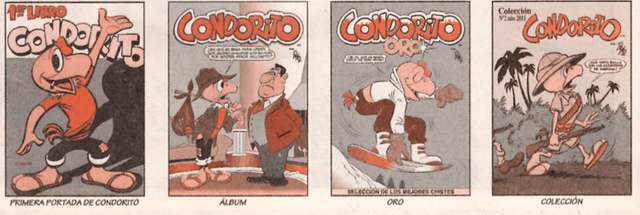
And now to the birth of that anthropomorphic South American condor, Condorito who took the stage in 1949 from the inspired pen of René Ríos whose nom-de-plum was Pepo. So then, there are really, two stories to tell, that of the creator and the character. Just as Cervantes is closely akin to el Quixote; so Pepo and Condorito continue to live through one other. And uncle Walt Disney even played a part in this story.
In 1941 the US Government sent uncle Walt on a goodwill propaganda tour of Latin America. He was to make a movie (Saludos Amigos Hello Friends) wherein each country had an animated character to represent that country. The US was already Mickey Mouse of course but Donald Duck kept trying to butt in. And as it turned out Chile became a small twin-engine plane named Pedrito that could hardly gain enough altitude to get over the Andes to deliver the mail. So although the artists likely hit it off personally, René, Pepo decided to sit down and create a character that actually represented the Chilean character. He just wasn’t satisfied with the little plane that thought he could. The rest, as they say, is Condor-History.
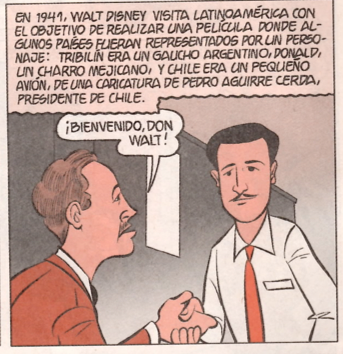
Goofy (Tribilín) was an Argentine Gaucho, Donald a Mexican Charro and

Chile was a small plane with the features of the Chilean President.
Vaguely believed to have been thrown out of the nest and raised by humans, the author actually gleaned Condorito’s image off of the National Crest. And not only is he Chilean to the max, Condorito is the number one comic character in all the Spanish-speaking world and beyond. Many people may even be surprised that he originated in Chile. The magazines are printed in at least four countries, namely Chile, Colombia, Spain and Mexico. And in each country the editing is apropos as to the linguistic idiosyncrasies and slang particular to that country. Condorito became transnational almost from the beginning and many future artists were trained, as with Disney, by working on the Condorito Team. The corporate giant Televisa consortium assumes ownership of the brand presently.
I’ll call him Condorito, this guy’ll be my legacy for future generations, I hope they like him.
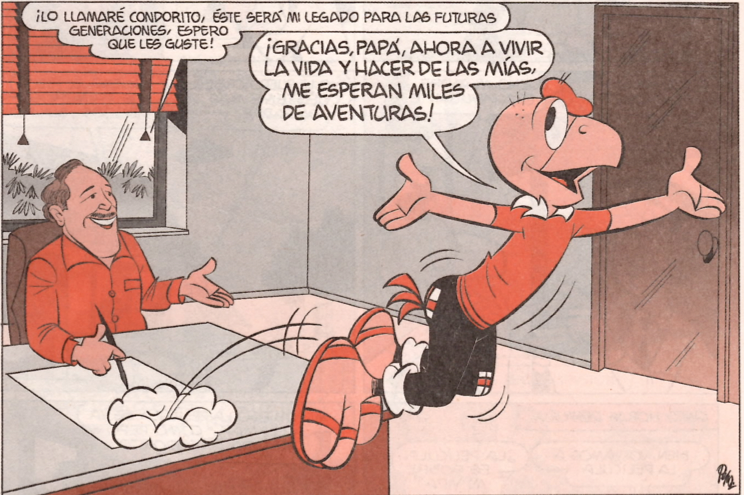
Thanks, Dad, now to live life and do my own thing, thousands of adventures await me!
Condorito may have been a condor by birth, but he jumped off of the Great Seal of Chile and was reared by humans like his father, Pepo. In fact Condorito is human right down to his last feather. He is Everyman, a legend in his own mind; one day he is a famous surgeon about to perform an intricate operation on the President of the Republic and on the next page he is pretending to be blind and begging on the street, cheating people out of their money.

His occupations run the entire gamut of human endeavor, he’s a worker, a unionist, a policeman, a gangster and a politician, he’s the mayor, a store owner, an employee, an artist, an actor, a musician, a banker, a beggar, a thief and a bum. Again he’s Chinese, an Arab, a Sultan, an African, a Biblical personality and a Maharaja as well as a Viking, a Roman, a Caveman, Robin Hood, William Tell, one of King Arthur’s Knights, a Plains Indian, the Calvary, a soldier, an officer and a draftee in the army.
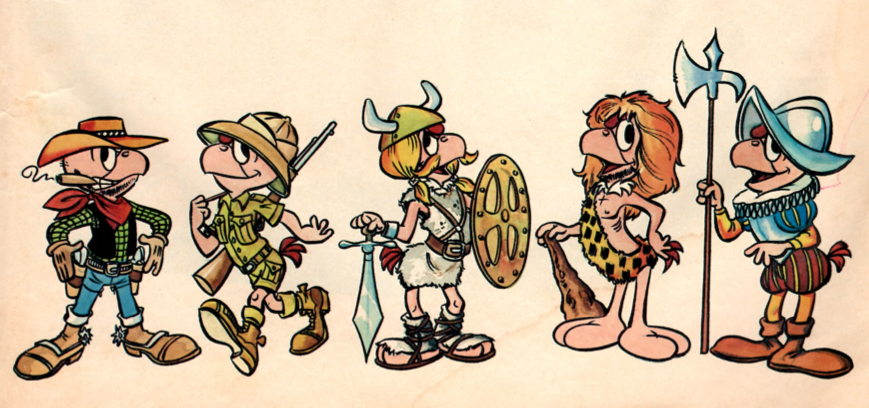
And he’s not alone. There’s a whole cast of characters, originally bumpkins from that small, southern Chilean town (Pelotillehue) who may pop up anywhere in time and space in the guise of the current setting. He has a best friend and lender of last resort Don Chuma, a gang of friends including Hard Boiled Egg (Huevo Duro) A Genius (Ungenio) González, Tin Throat (Garganta de Lata) Angel Hair (Cabellos de Angel) Cat Eater (Comegatos) a nasty rival “frienemy” in Pepe Cortisona, a wonderful girlfriend Yayita and the in-laws, her parents Doña Tremebunda y Don Cuasimodo Vinagre. And there are prominent people of the town such as the priest Padre Venancio and the millionaire Don Máximo Tacaño.

The town itself is a classic Macondo (Everywhereville, or Nowheresville) and there are rival towns such as Buenas Peras (good pears but also implied high hopes) and Cumpeo perhaps the township or municipality. There is also a pint-sized version of himself, his nephew Coné who being abandoned by his mother - Condorito’s long-lost sister, lives with him.
So what better way to study than to read the comics. Every page is 100% dialogue with just a touch of narration in the comic book fashion. I use this material in my Spanish classes and translate each line literally as much as possible so a student of the language can see how the words and phrases are used, sometimes giving both the literal and (smoother-sounding) figurative translation. The material is intermediate to advanced including lots of plays on words, comedic gags, pathos, irony, sarcasm, double entendre and all the plain old expressions of life in this world. Of course Condorito is a classic picaresque character in the tradition of Spanish Literature. The extraordinary thing about him is that he’s just so common.
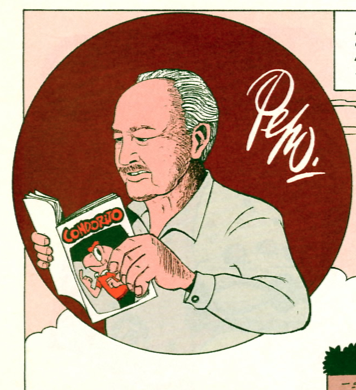

Very informative post, maybe edit and include a few strips. Thanks for sharing.
Downvoting a post can decrease pending rewards and make it less visible. Common reasons:
Submit
Thanks, I will but in future posts. Too long as is.
Downvoting a post can decrease pending rewards and make it less visible. Common reasons:
Submit